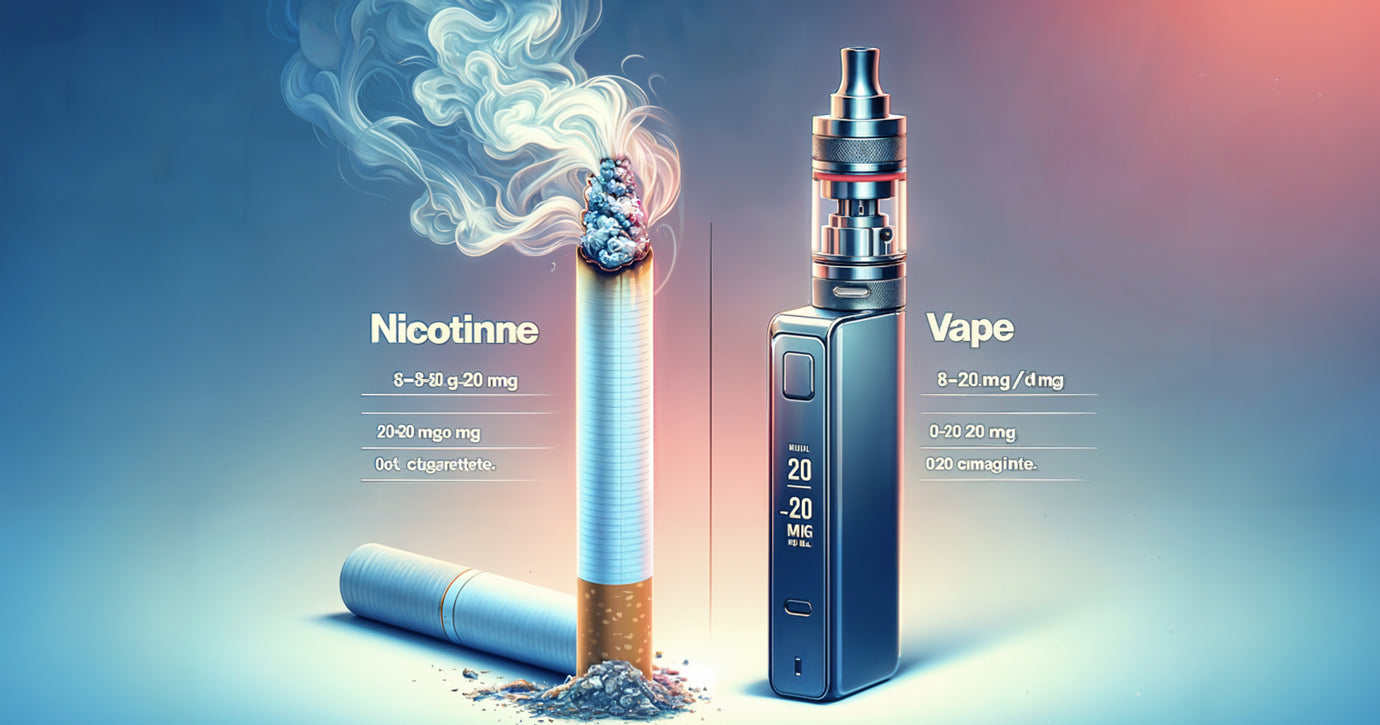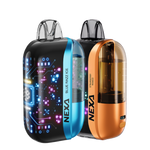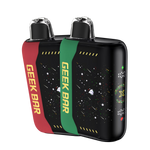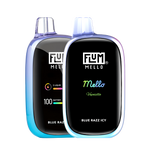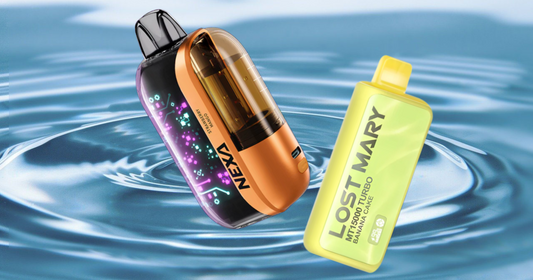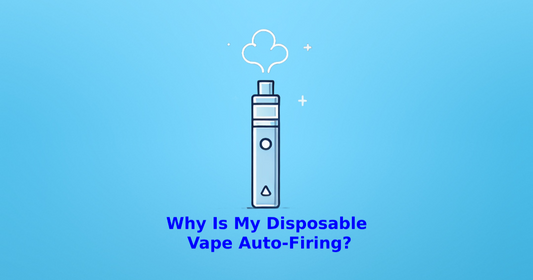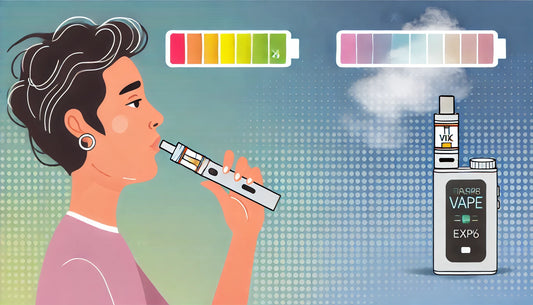Introduction
Nicotine is a naturally occurring chemical found in tobacco leaves, and it plays a significant role in tobacco products like cigarettes and vapes. It is the primary substance responsible for the addictive nature of these products. Cigarettes have long been a prevalent source of nicotine for many, but vapes have emerged as an alternative that offers varied nicotine strengths.
Understanding the nicotine content in these products is crucial for both regular smokers and vaping enthusiasts. Whether you are looking to monitor your intake for health reasons or considering switching from smoking to vaping, knowing how much nicotine you are consuming can help you make informed decisions.
- Nicotine Content: Varies significantly between cigarettes and vape liquids.
- User Awareness: Essential for managing consumption and recognizing potential health impacts.
Grasping the differences in nicotine levels between traditional cigarettes and modern vapes provides valuable insights into their effects on the body.
Understanding Nicotine
Definition and Role of Nicotine in Tobacco Leaves
Nicotine is a naturally occurring alkaloid found primarily in tobacco plants. It acts as the plant's natural defense mechanism against herbivores, due to its toxic properties. When humans inhale or ingest nicotine, it stimulates the release of neurotransmitters in the brain, such as dopamine, which creates feelings of pleasure and reward.
Addictive Properties of Nicotine and Its Impact on the Brain
One of the main reasons why nicotine is so addictive is because it strongly affects the brain's reward system. It binds to nicotinic acetylcholine receptors, causing a series of neurotransmitter releases including dopamine. This sudden increase in dopamine reinforces the act of consuming nicotine, making it highly addictive. The fact that nicotine is absorbed quickly by the body and produces rapid effects also contributes to its addictive potential. As a result, people who use nicotine can develop a physical dependence on it and experience withdrawal symptoms when they try to quit.
Brief Historical Background of Nicotine Use
The use of nicotine goes back many centuries. Indigenous peoples in the Americas used tobacco for ceremonies long before European explorers brought it to Europe in the late 15th century. Over time, tobacco became widely available, and smoking as well as other forms of tobacco use became popular worldwide. However, it wasn't until more recent scientific advancements that researchers fully understood the addictive nature of nicotine and its associated health risks.
Nicotine has been both praised for its stimulating effects and criticized for its negative impact on health. Throughout history, it has been used for various purposes ranging from medicine to recreation, highlighting its complex relationship with human societies.
Nicotine Content in Cigarettes
Average Range of Nicotine Content in Cigarettes
Nicotine content in cigarettes typically ranges from 8 to 20 milligrams per cigarette. This variability depends on several factors, including the tobacco blend used and the cigarette's design. Understanding how much nicotine is in a cigarette is crucial for both smokers and those considering alternatives like vaping.
Case Study: Comparing Popular Brands
To illustrate the variation in nicotine levels, consider two popular brands:
- Marlboro Red: Known for its strong flavor, a Marlboro Red cigarette contains approximately 1.2 mg of nicotine. This higher content appeals to smokers seeking a robust experience.
- Silk Cut: Positioned as a lighter alternative, Silk Cut cigarettes contain around 0.4 mg of nicotine per cigarette. This lower concentration makes them suitable for smokers who prefer milder options.
Factors Influencing Nicotine Levels
Several factors contribute to the variation in nicotine content in cigarettes:
- Tobacco Blend: The type of tobacco plant and its curing process significantly affect nicotine levels.
- Filter Design: Filters can reduce the amount of nicotine and tar inhaled.
- Paper Permeability: The paper's air permeability influences how much smoke (and thus nicotine) is inhaled.
- Additives: Some manufacturers add substances to enhance or reduce nicotine delivery.
Nicotine Absorption from Cigarettes
Rate of Nicotine Absorption from a Single Cigarette
While a cigarette might contain between 8 to 20 mg of nicotine, the actual amount absorbed by the body is much less. Typically, smokers absorb about 1 to 2 milligrams of nicotine per cigarette. This discrepancy arises because not all the nicotine present in the tobacco is delivered to or absorbed by the smoker.
Influence of Smoking Technique
The technique used by smokers can significantly influence cigarette nicotine absorption:
- Inhalation Depth: Deeper inhalations lead to increased nicotine uptake.
- Puff Frequency: More frequent puffs result in higher nicotine absorption.
- Cigarette Length Smoked: Smoking closer to the filter increases the total amount of nicotine consumed.
Different smoking techniques can thus cause variations in how much nicotine reaches the bloodstream.
Understanding these dynamics helps you make informed choices about your smoking habits or consider alternatives like vaping.
Nicotine Content in Vapes
Overview of E-Liquids and Their Composition
E-liquids, the substance used in vapes, typically consist of a mixture of propylene glycol (PG), vegetable glycerin (VG), flavorings, and nicotine. The nicotine content in e-liquids can vary widely, ranging from 0 mg/ml (nicotine-free) to over 24 mg/ml. This variability allows users to select an appropriate nicotine strength based on their preferences and dependency levels.
- 0 mg/ml: No nicotine
- 3-6 mg/ml: Low nicotine
- 12-18 mg/ml: Medium nicotine
- 24+ mg/ml: High nicotine
Variability Across Vape Brands and Flavors
Several factors contribute to the variability in nicotine content across different vape brands and flavors:
- Nicotine Salt vs. Freebase Nicotine: Nicotine salts provide a smoother throat hit and higher nicotine concentration compared to freebase nicotine.
- Brand Formulations: Different brands have unique formulations that affect how much nicotine is delivered.
- Flavor Profiles: Some flavors may influence the perception of throat hit and satisfaction, potentially affecting usage patterns.
Nicotine Absorption from Vapes
Differences in Nicotine Absorption Between Vaping and Smoking Cigarettes
Nicotine absorption from vaping differs significantly from smoking cigarettes. When smoking, nicotine is rapidly absorbed through the lungs into the bloodstream, providing an almost immediate effect. In contrast:
- Vapor vs. Smoke Composition: Vaporized e-liquid contains fewer harmful chemicals but may result in slower nicotine uptake.
- Inhalation Technique: The method of inhalation impacts how much nicotine is absorbed. Deep inhalations common with cigarette smoking differ from the often shorter puffs taken while vaping.
Impact of Device Specifications and User Behavior
Device specifications and user behavior greatly impact how much nicotine is absorbed from e-cigarettes:
Device Specifications:
- Power Output (Wattage):
- Higher wattage devices produce more vapor, potentially increasing nicotine delivery.
- Coil Resistance:
- Lower resistance coils (sub-ohm) generate more vapor, enhancing nicotine absorption.
User Behavior:
- Puff Duration:
- Longer puffs can lead to greater nicotine intake per session.
- Frequency of Use:
- Frequent use throughout the day can accumulate higher levels of absorbed nicotine.
Comparing Nicotine Delivery Methods
Understanding these differences highlights why comparing traditional cigarettes with e-cigarettes requires considering both the chemical composition and user experience. Vaping generally results in a more controlled release of nicotine, allowing users to manage their intake more precisely compared to smoking cigarettes.
Comparing Nicotine Delivery: Cigarettes vs. Vapes

Key Differences in Nicotine Delivery
Understanding how nicotine is delivered to your system through cigarettes and vapes reveals key differences influenced by the mechanisms of each product.
Cigarettes
- Combustion of tobacco releases nicotine along with tar and other chemicals.
- Quick absorption occurs through the lungs, leading to a rapid spike in blood nicotine levels.
- Nicotine delivery is consistent across puffs due to the fixed composition of the cigarette.
Vapes
- E-liquids are vaporized, delivering nicotine without combustion.
- Absorption through the lungs is slower compared to smoking.
- Variability in nicotine delivery due to different e-liquid strengths, device power settings, and user inhalation techniques.
Nicotine Bioavailability
Nicotine bioavailability refers to the proportion of nicotine that enters systemic circulation and is available for activity. This concept is crucial for comparing nicotine delivery efficiency between cigarettes and vapes.
Cigarette Bioavailability
- High bioavailability due to efficient lung absorption.
- Rapid onset of nicotine effects, contributing to addiction potential.
Vape Bioavailability
- Generally lower bioavailability compared to cigarettes.
- Factors like device wattage, coil resistance, and vaping technique can influence nicotine uptake.
The vape vs cigarette comparison highlights that while both methods deliver nicotine effectively, the speed and consistency of delivery differ significantly. Cigarettes provide a more immediate and predictable spike in blood nicotine levels, whereas vaping offers a more controlled and variable experience. Understanding these differences helps you make informed choices about your nicotine consumption habits.
Understanding the Implications: Nicotine, Smoking, and Vaping
Health Risks of Long-Term Smoking and Vaping
Smoking cigarettes exposes users to a plethora of harmful chemicals. Tar, carbon monoxide, and various carcinogens found in tobacco smoke contribute significantly to diseases such as lung cancer, chronic obstructive pulmonary disease (COPD), and heart disease. The cumulative effect of these substances results in severe long-term health consequences.
Vaping, often marketed as a safer alternative, is not without its risks. While it eliminates many of the harmful byproducts of combustion present in cigarettes, e-cigarettes still contain nicotine and other potentially harmful substances. These can include propylene glycol, vegetable glycerin, and various flavorings that may have unknown long-term health effects. Instances of vaping-associated lung injury (VALI) highlight the potential dangers.
Side Effects of Nicotine Replacement Therapies
Nicotine replacement therapies (NRTs) like patches and gum are commonly used to aid smoking cessation. They provide a controlled dose of nicotine to reduce withdrawal symptoms. However, they come with their own set of side effects:
- Nicotine Patches: Skin irritation at the application site, dizziness, headaches, and sleep disturbances.
- Nicotine Gum: Mouth soreness, hiccups, nausea, and jaw discomfort due to chewing.
Both forms aim to mitigate nicotine addiction by providing a less harmful way to satisfy cravings compared to smoking or vaping. Their effectiveness varies among individuals but can be enhanced when used in combination with behavioral support programs.
Comparative Health Impact
Understanding the health implications of smoking versus vaping is crucial for making informed choices. Cigarettes deliver numerous toxic chemicals along with nicotine, leading to high rates of morbidity and mortality. Vapes offer a potentially lower-risk alternative but are not entirely risk-free. Regulatory oversight on vape products remains essential to minimize harm.
Adopting any form of nicotine carries inherent risks due to its addictive nature and its impact on the brain's reward system. Users need comprehensive information about these risks to make educated decisions regarding their health.
The Role of Vaping in Smoking Cessation
Evidence Supporting Vaping as a Harm Reduction Tool
Vaping has gained attention as a potential harm reduction tool for smokers looking to quit. Several studies highlight the effectiveness of vaping for smoking cessation. For instance, research published in the New England Journal of Medicine found that e-cigarettes were more effective than nicotine replacement therapies (NRTs) like patches and gum at helping smokers quit. The study reported that 18% of participants using e-cigarettes managed to remain smoke-free after one year, compared to just 9.9% of those using traditional NRTs.
Additionally, according to a landmark review by Public Health England, e-cigarettes are estimated to be 95% less harmful than conventional cigarettes. This substantial reduction in harm can make the transition from smoking to vaping an appealing option for smokers seeking to reduce their health risks while managing nicotine cravings.
Conventional Smoking Cessation Methods
Several conventional methods are available for those looking to quit smoking:
- Nicotine Patches: These provide a steady, controlled release of nicotine through the skin. They come in various strengths, allowing users to taper their nicotine intake gradually.
- Nicotine Gum: Chewing this gum releases nicotine into the bloodstream via the lining of the mouth. It offers immediate relief from cravings and can be used on-demand.
- Nicotine Inhalers: These devices mimic the hand-to-mouth action of smoking. They deliver nicotine vapor that is absorbed through the mouth and throat, providing quick relief from withdrawal symptoms.
- Prescription Medications: Drugs like varenicline (Chantix) and bupropion (Zyban) can also be prescribed to help manage withdrawal symptoms and reduce cravings.
Each method has its own set of benefits and limitations. While traditional NRTs have been proven effective, many smokers find them less satisfying due to their inability to replicate the sensory and behavioral aspects of smoking.
The versatility of vaping devices and e-liquid flavors presents an additional advantage, making them a more customizable and potentially enjoyable cessation tool. This personalization aspect can play a significant role in maintaining commitment during the quitting process.
Understanding these options allows you to make an informed decision tailored to your unique needs and preferences when considering quitting smoking.
Legal and Regulatory Considerations for Nicotine Products
Government regulations have a significant impact on how tobacco products and e-cigarettes are made and sold. One example of this is the EU Tobacco Products Directive (TPD), which has greatly influenced the world of nicotine products.
The EU Tobacco Products Directive
The TPD was created by the European Union to enforce strict rules on tobacco-related items in order to safeguard public health. Here are some key points:
- Nicotine Content Limits: E-liquids can only have a maximum nicotine concentration of 20 mg/ml.
- Packaging and Labeling: Health warnings that cover 65% of the package, clear ingredient lists, and no promotional elements to discourage minors from being interested.
- Product Testing and Notification: Manufacturers must provide detailed information about their products, such as ingredients and emissions data, before they can sell them.
- Advertising Restrictions: There are complete bans on advertising and promotion through different media platforms.
Impact on Manufacturers and Consumers
These regulations aim to make nicotine content consistent, improve consumer safety, and prevent young people from getting access to nicotine products. Here's how it affects manufacturers:
- Compliance Costs: They have to spend more money because of strict testing and reporting requirements.
- Innovation Barriers: The restrictions may stop them from creating new products that could be safer.
And here's how it affects consumers:
- Consistent Products: They can be sure that regulated nicotine levels make the products safer.
- Better Choices: Clear labeling helps them make smarter decisions about how much nicotine they consume.
Global Regulatory Landscape
Apart from what's happening in the EU, countries all over the world have different ways of regulating nicotine:
- United States: The FDA is in charge of tobacco products based on the Family Smoking Prevention and Tobacco Control Act. Their rules focus on product standards, reviewing them before they're sold, and limiting how they can be marketed.
- Australia: E-cigarettes that have nicotine are seen as prescription-only medicines, so not a lot of people can buy them.
Knowing about these rules can assist users in understanding the complicated world of nicotine products. Being familiar with legal frameworks is important for manufacturers to follow the rules and for consumers to make informed choices.
Making Informed Choices: Navigating Nicotine Use
Understanding nicotine is essential for anyone considering or currently using nicotine products. The first step is to educate yourself about the potential risks and benefits associated with nicotine use.
Key Considerations:
- Health Risks: Recognize that nicotine is highly addictive. Prolonged use can lead to various health issues, including cardiovascular problems and respiratory diseases.
- Benefits and Downsides: While some use nicotine for its stimulant effects, the downsides often outweigh the benefits. It's crucial to weigh these factors carefully.
- Nicotine Strengths: Be aware of the varying nicotine strengths in products like cigarettes and e-liquids. This knowledge helps in making informed decisions tailored to your needs.
Seeking Professional Advice:
Consulting healthcare professionals can provide personalized advice based on your health status and needs. They can guide you through:
- Nicotine Replacement Therapies: Options like patches, gum, or lozenges might be suitable alternatives.
- Smoking Cessation Programs: These programs are designed to help individuals quit smoking and manage withdrawal symptoms effectively.
Quote from a healthcare professional:
"Understanding the implications of nicotine use is vital. Always seek professional guidance to navigate your options safely."
Making informed choices involves continuous learning and professional consultation. This proactive approach ensures that you minimize risks while managing your nicotine use responsibly.
Conclusion
Understanding the differences in nicotine content in cigarettes and nicotine content in vapes is essential for anyone using these products.
- Cigarettes typically contain between 8 to 20 milligrams of nicotine, with absorption rates around 1 to 2 milligrams per cigarette. Popular brands like Marlboro Red deliver approximately 1.2 mg of nicotine per cigarette, whereas lighter options such as Silk Cut may contain as little as 0.4 mg.
- Vapes offer a wider range of nicotine concentrations, from 0 mg/ml to over 24 mg/ml. This variability allows users to tailor their nicotine intake more precisely. For instance, a vape cartridge with 5% nicotine can deliver nicotine amounts comparable to multiple packs of cigarettes, highlighting the importance of understanding each product's strength.
The method of nicotine absorption also plays a crucial role. While smoking results in quicker and more efficient nicotine uptake due to combustion, vaping provides a different experience due to the vaporization process and device specifications. These factors contribute to differing health implications and addiction potentials between the two methods.
Recognizing these distinctions helps users make informed choices regarding their nicotine consumption. Whether you're a smoker considering vaping or someone evaluating your current habits, awareness of these nuances can guide safer and more effective usage patterns.
